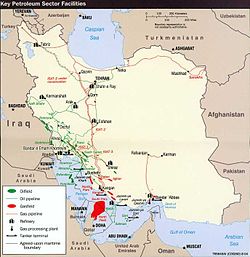
The Iran Gas Trunkline (IGAT) is a series of large diameter pipelines constructed from gas refineries in the south of Iran (Khuzestan and Bushehr provinces) in order to transfer natural gas to consumption centers across the country. [1]
Contents
As of 2024, there are ten trunklines in operation and one under construction [2]

